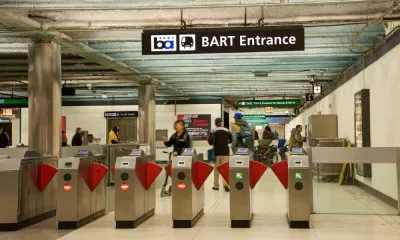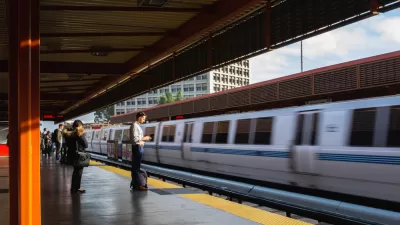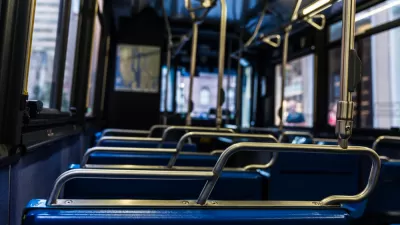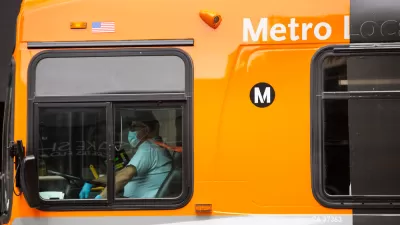California state political leaders last night struck a deal to keep the state’s transit systems afloat as ridership continues to recover and federal pandemic stimulus money runs dry.

“California’s state budget will include a subsidy for BART, SFMTA and Bay Area transit agencies that could delay service cuts agencies warned would happen as early as fall as they approach massive financial deficits,” reports Ricardo Cano in a paywalled article for the San Francisco Chronicle.
“The budget deal struck by Gov. Gavin Newsom and Democratic legislative leaders Sunday night nixes $2 billion in cuts to transit capital projects that the governor proposed in January. Transit agencies will be able to ‘flex’ these preserved capital funds to pay for service costs,” according to the article.
The budget breakthrough came just a few days after S&P Global Ratings dropped the Bay Area Rapid Transit District’s credit two levels, to A+.
In addition to the flex funding for operations, California transit systems will receive $1.1 billion in state cap-and-trade program funding. Together, the funding is enough to delay a fiscal cliff that leaders at BART and Muni had predicted would arrive in 2025. Deep service cuts, however, could have started to take effect as early as this fall, according to Cano, who also reported in detail on the risks facing California transit systems in March 2023.
California is far from alone in needing to find long-term solutions to the transit funding gap—Washington, D.C.’s Metro has been threatened with a lower credit rating, for example, and New York City's transit systems are pinning their hopes for a long-term finding solution on a long-delayed and controversial congestion pricing scheme that would charge drivers to enter a large section of Manhattan.
FULL STORY: California budget deal will include a $1.1 billion bailout for BART, Bay Area transit

Study: Maui’s Plan to Convert Vacation Rentals to Long-Term Housing Could Cause Nearly $1 Billion Economic Loss
The plan would reduce visitor accommodation by 25,% resulting in 1,900 jobs lost.

North Texas Transit Leaders Tout Benefits of TOD for Growing Region
At a summit focused on transit-oriented development, policymakers discussed how North Texas’ expanded light rail system can serve as a tool for economic growth.

Why Should We Subsidize Public Transportation?
Many public transit agencies face financial stress due to rising costs, declining fare revenue, and declining subsidies. Transit advocates must provide a strong business case for increasing public transit funding.

How to Make US Trains Faster
Changes to boarding platforms and a switch to electric trains could improve U.S. passenger rail service without the added cost of high-speed rail.

Columbia’s Revitalized ‘Loop’ Is a Hub for Local Entrepreneurs
A focus on small businesses is helping a commercial corridor in Columbia, Missouri thrive.

Invasive Insect Threatens Minnesota’s Ash Forests
The Emerald Ash Borer is a rapidly spreading invasive pest threatening Minnesota’s ash trees, and homeowners are encouraged to plant diverse replacement species, avoid moving ash firewood, and monitor for signs of infestation.
Urban Design for Planners 1: Software Tools
This six-course series explores essential urban design concepts using open source software and equips planners with the tools they need to participate fully in the urban design process.
Planning for Universal Design
Learn the tools for implementing Universal Design in planning regulations.
Ascent Environmental
Borough of Carlisle
Institute for Housing and Urban Development Studies (IHS)
City of Grandview
Harvard GSD Executive Education
Toledo-Lucas County Plan Commissions
Salt Lake City
NYU Wagner Graduate School of Public Service





























